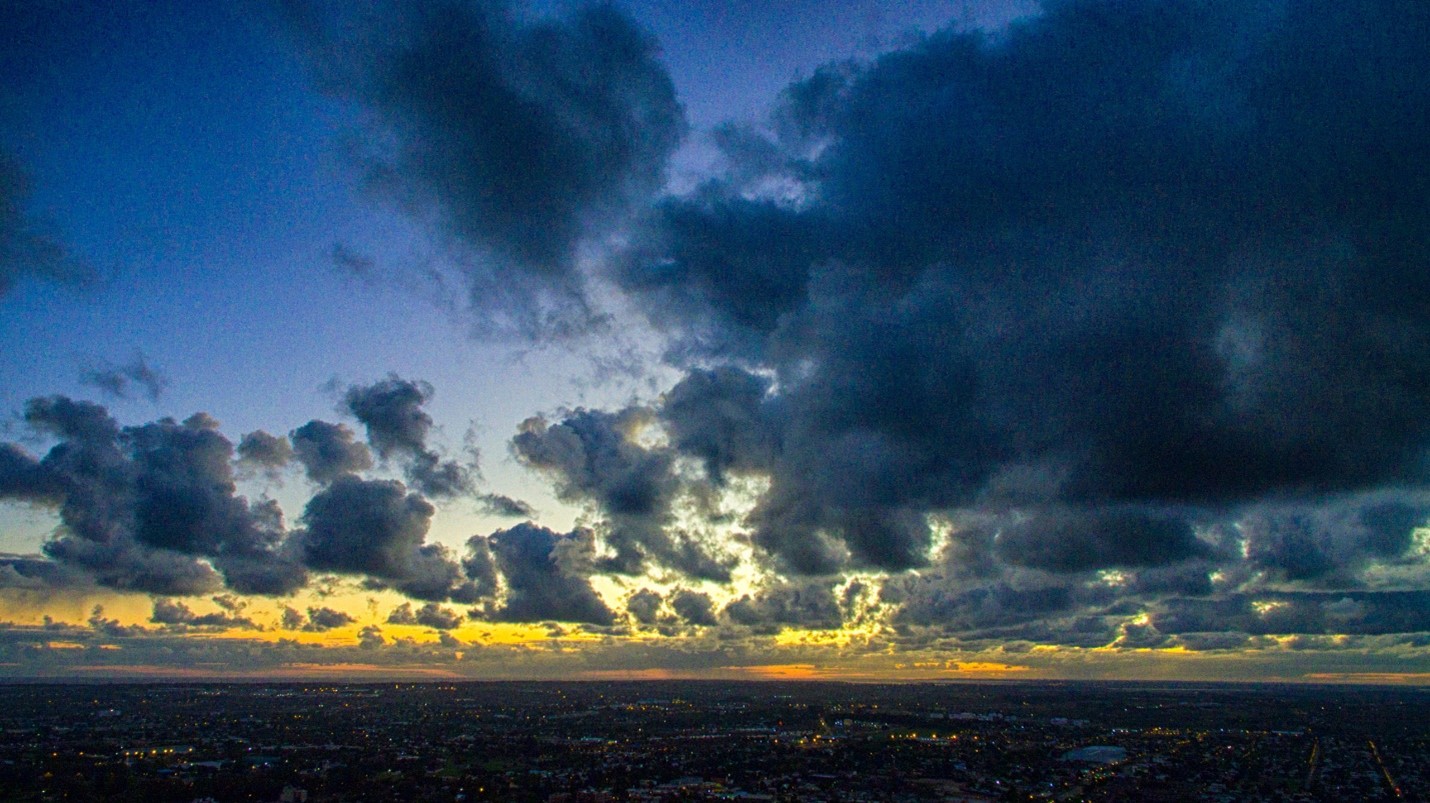Urban pollution perturbs the life cycle of Amazon rainforest clouds
Submitter
Fast, Jerome D
— Pacific Northwest National Laboratory
Area of Research
Aerosol Processes
Journal Reference
Zaveri R, J Wang, J Fan, Y Zhang, J Shilling, A Zelenyuk, F Mei, R Newsom, M Pekour, J Tomlinson, J Comstock, M Shrivastava, E Fortner, L Machado, P Artaxo, and S Martin. 2022. "Rapid growth of anthropogenic organic nanoparticles greatly alters cloud life cycle in the Amazon rainforest." Science Advances, 8(2), 10.1126/sciadv.abj0329.
Science

Figure 1. The rapid growth of anthropogenic pollution nanoparticles has climate implications due to altered cloud radiative properties and precipitation. Image by Marcelo Campi|Flickr
The indirect effect of aerosols on clouds, radiation, and precipitation is one of the most uncertain factors in predicting future global climate change. Urban areas produce copious nanoparticles smaller than 10 nanometers, which are too small to act as efficient cloud condensation nuclei. The mechanisms responsible for particle growth to cloud-nucleating sizes are poorly understood. Researchers examined the impacts of pollution-induced nanoparticles on clouds in the Amazon rainforest. They found that nanoparticles rapidly grew via the condensation of semivolatile organic vapor and substantially altered the formation of shallow convective clouds, suppressed precipitation, and enhanced the transition of shallow to deep convective clouds.
Impact
Aerosols play a crucial role in the Earth’s energy balance and hydrological cycle by interacting with incoming solar radiation and forming clouds. This study improves fundamental scientific understanding of how pollution-induced nanoparticles grow and impact cloud life cycles in the otherwise pristine environment of the Amazon rainforest. Understanding how natural and pollution-induced aerosols impact clouds and precipitation under different environmental conditions is an important step in reducing the large uncertainties associated with aerosol indirect effects in weather and climate predictions. This understanding will allow scientists to provide a better perspective on the broader impacts of air pollution regulations.
Summary
U.S Department of Energy (DOE) researchers from the Atmospheric Radiation Measurement user facility systematically investigated the aerosol growth mechanisms responsible for the observed rapid growth of the numerous pollution-induced nanoparticles downwind of Manaus, an isolated metropolis in the central Amazon Basin, during the GoAmazon field campaign in 2014-15. Combining insights from laboratory studies and detailed model analysis of field measurements, including the DOE Environmental Molecular Sciences Laboratory’s aerosol mass spectrometer observations, they found that the condensation of semivolatile oxidation products of naturally emitted biogenic hydrocarbons sustains the rapid growth of nanoparticles into cloud condensation nuclei (CCN). They showed that the semivolatile organic vapors dynamically partition into particles of different sizes. Accurately reproducing the growth of nanoparticles as well as the evolution of aerosol number and volume size distributions requires accounting for particle-phase bulk diffusion limitations in large semisolid particles.
Additionally, the researchers used a real-case simulation to reveal a clear effect that the rapid growth of pollution nanoparticles into CCN can exert on the cloud life cycle downwind of Manaus. Cloud-resolving numerical simulations show that the enhanced CCN concentrations in the urban plume substantially alter the formation of shallow convective clouds, suppress precipitation, and enhance the transition to deep convective clouds. The proposed nanoparticle growth mechanism, expressly enabled by the abundantly formed semivolatile organics, suggests an appreciable impact of anthropogenic aerosols on clouds in previously unpolluted forests.
Keep up with the Atmospheric Observer
Updates on ARM news, events, and opportunities delivered to your inbox
ARM User Profile
ARM welcomes users from all institutions and nations. A free ARM user account is needed to access ARM data.


















